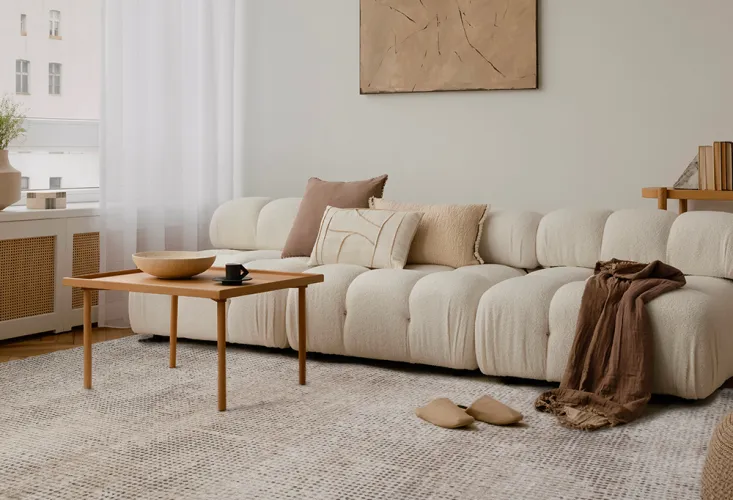
LOOKING FOR A NEW KITCHEN CARPET? OUR ADVICE!
When it comes to the kitchen carpet it's all too easy to say that practicality and functionality are the two directions to buy online or in shop.
But there are other considerations we want to share on our blog to help you find some inspiration before proceeding to purchase a kitchen carpet.
The market is full of proposals regardingmaterials, shapes, usability and, of course, prices. So we wanted to share a few questions (and answers) on how to go about buying a kitchen carpet.
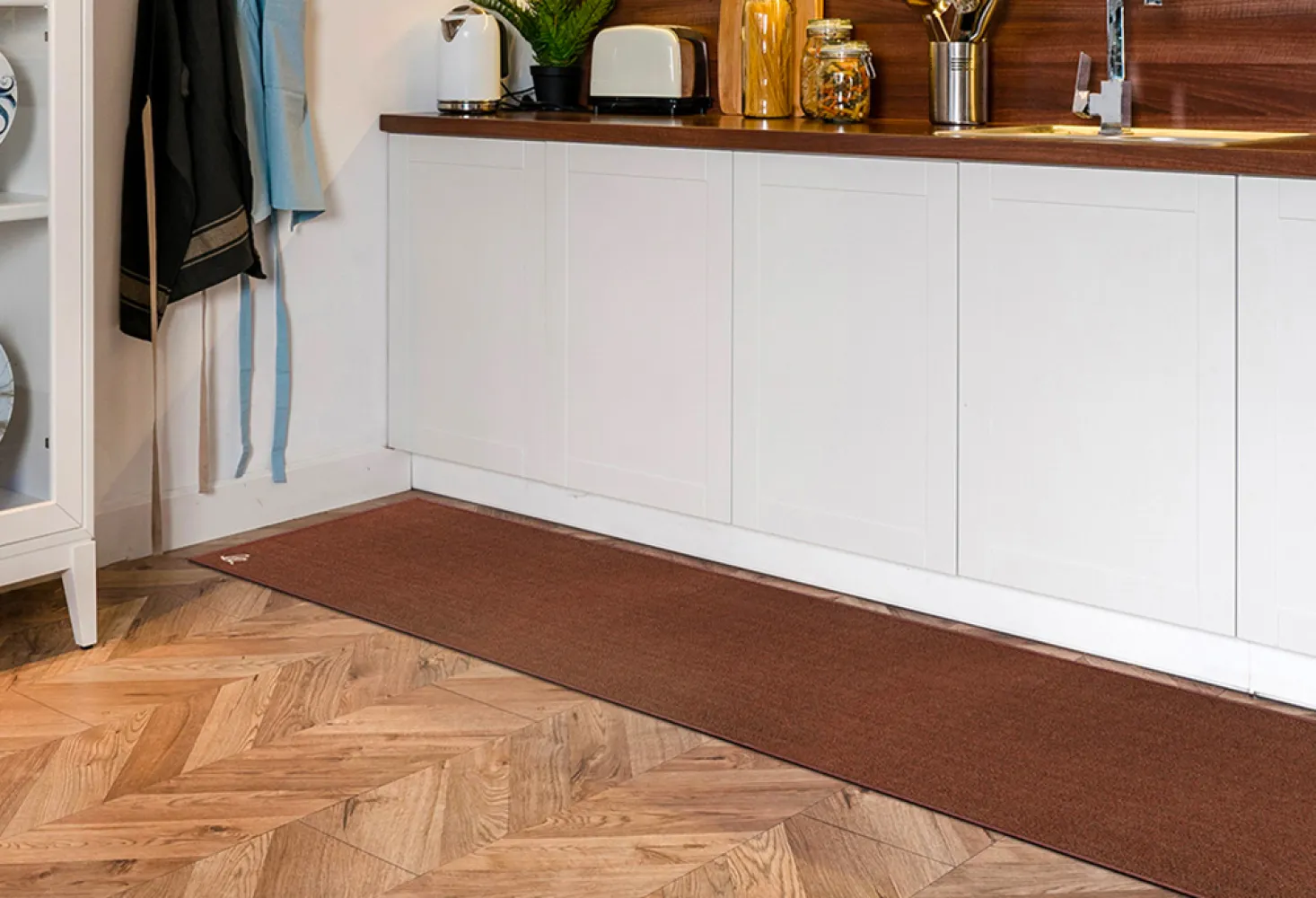
Tips for buying a kitchen carpet: considerations.
The first thoughts concern the kind of habits we have, our routine at home and in particular the use we make of the kitchen.
Do we spend a lot of time in it? Is it frequented by young children (watch out for safety), pets (thus inevitable shedding of hair), friends invited for dinner (let's always put a bit of style into it) or is it a corner all to oneself where one only spends a few moments in the morning for breakfast and in the evening to prepare bedtime tea?
These factors are important in choosing a carpet because they can determine the type of material from which it is made.
For example: a kitchen carpet made of synthetic fibres may be ideal for a busy kitchen because it is more durable than one made of natural material (e.g. a cotton carpet).
Not only that: do we enjoy cooking very complex dishes or are we "raw" and only eat salads and seasonal fruit? This too, apart from all the nuances, is of interest because it identifies the material for the purchase of an easy-to-wash kitchen carpet (e.g. PVC kitchen carpet or one made of bamboo).
Last but not least: how big is the kitchen? Is it large and spacious and therefore liveable? Or is it small with a kitchenette and table or little more? Does the kitchen carpet serve mainly as protection or perhaps also to give a visible limit to the space?
.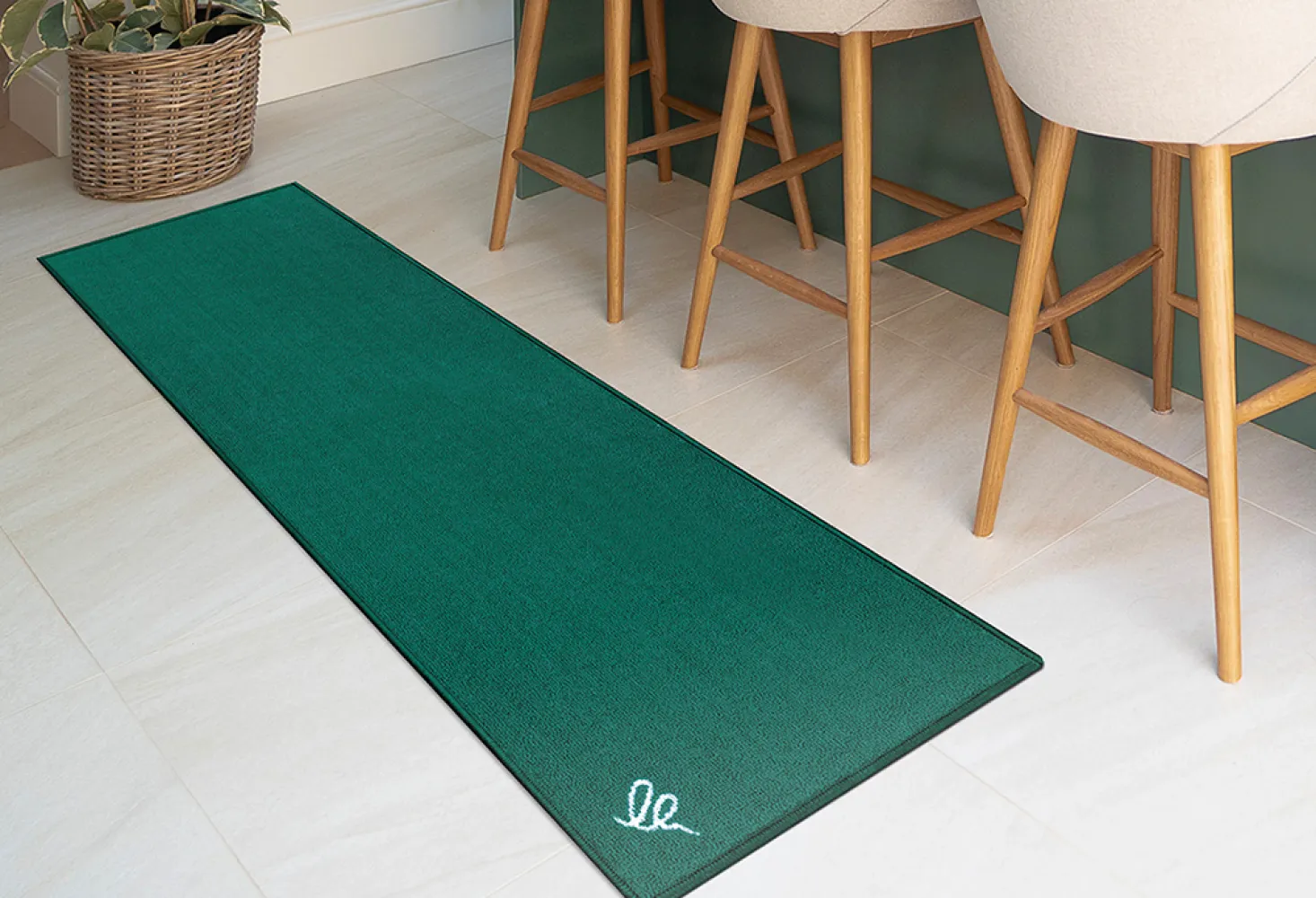
What are the best carpets for the kitchen?
At this point it is clear that the question is not really formulated in the optimal way because the answer inevitably is: "It depends", taking into account some of the factors mentioned above.
The correct question should be: "Considering one's habits and the size of the room, what is the best kitchen carpet to buy?"
- Resilient and easily washable kitchen carpet: as mentioned, if the kitchen is highly frequented, it is better to opt for a synthetic-fibre carpet (e.g. polypropylene, textilene or nylon) or vinyl materials (such as PVC) because continuous treading and rubbing is less impactful on this type of material; safe kitchen carpet: it is essential to ensure that the carpet has non-slip backing to avoid painful household accidents especially if there are children and elderly people in the house;
- Style or protective carpet: the idea is that there are products on the market today that meet both requirements but the price ranges are likely to change. Let's think about whether it makes sense to put a nice, medium-high-end rug (or runner) next to the cooker with the risk of frying oil or sauce getting on it. Perhaps it would be better to put it under the table and use a less demanding rug to protect the floor from splashes from pots and pans;
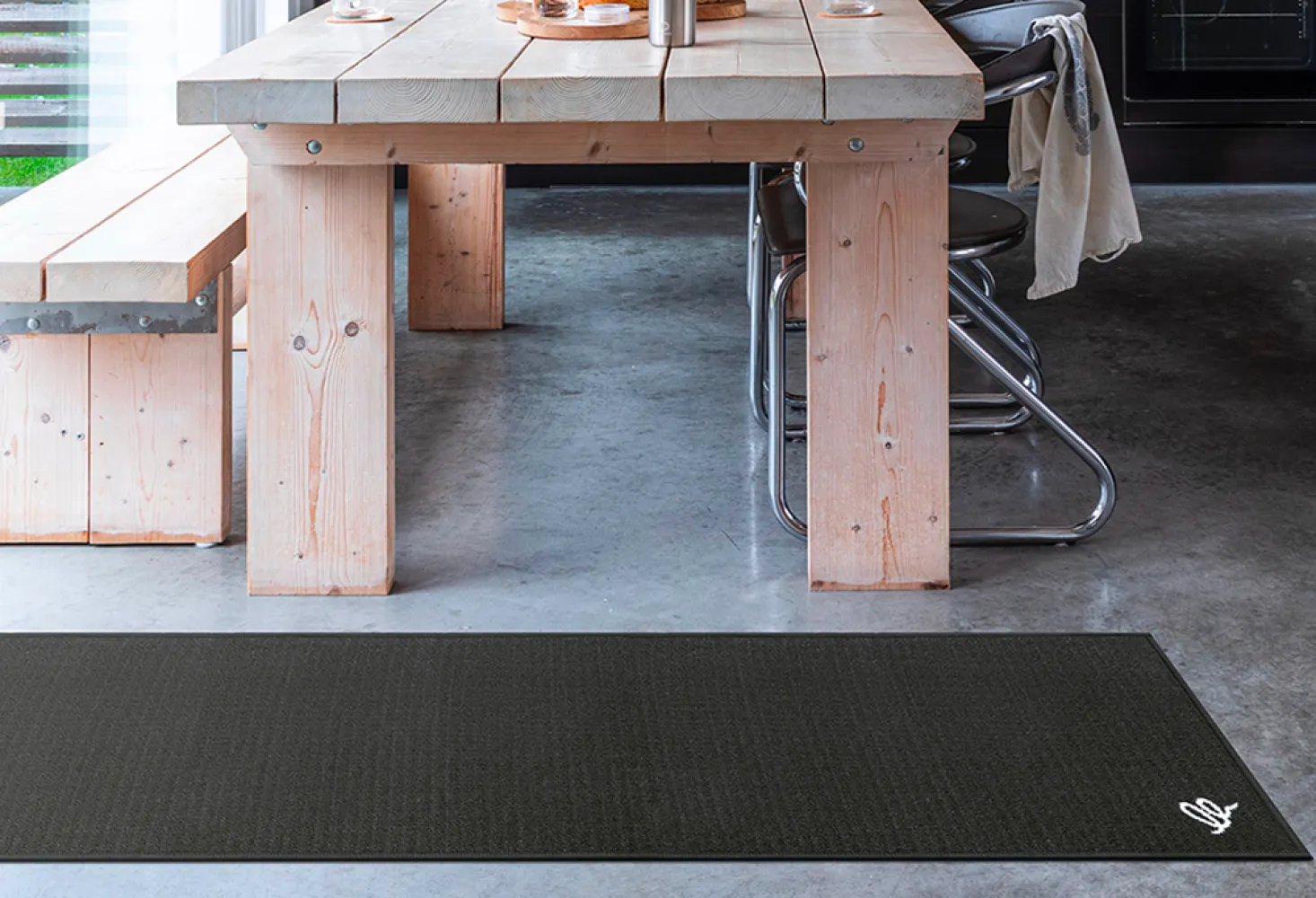
How to clean the kitchen carpet?
The subject is a delicate one, as today we no longer limit ourselves to the concept of cleaning but also of hygienisation.
Cotton kitchen mats, for example, are worth machine washing (according to the manufacturer's instructions) so that we can be sure that we have rid ourselves of bacteria, germs and mites.
Similarly, according to the manufacturer's instructions, carpets made of synthetic fibres used in the kitchen can be washed in the washing machine but, if necessary, also with a cloth and a cleaning product if, for example, you happen to spill some food on them.
Apparently easier to clean, but perhaps not more practical, are bamboo and PVC kitchen mats: a cloth, some water, perhaps a little product and you're done. The characteristics of the materials are such that stains slide off easily. Of course, compared to natural or synthetic fibre carpets putting everything in the washing machine may seem more convenient, but this is a personal choice.
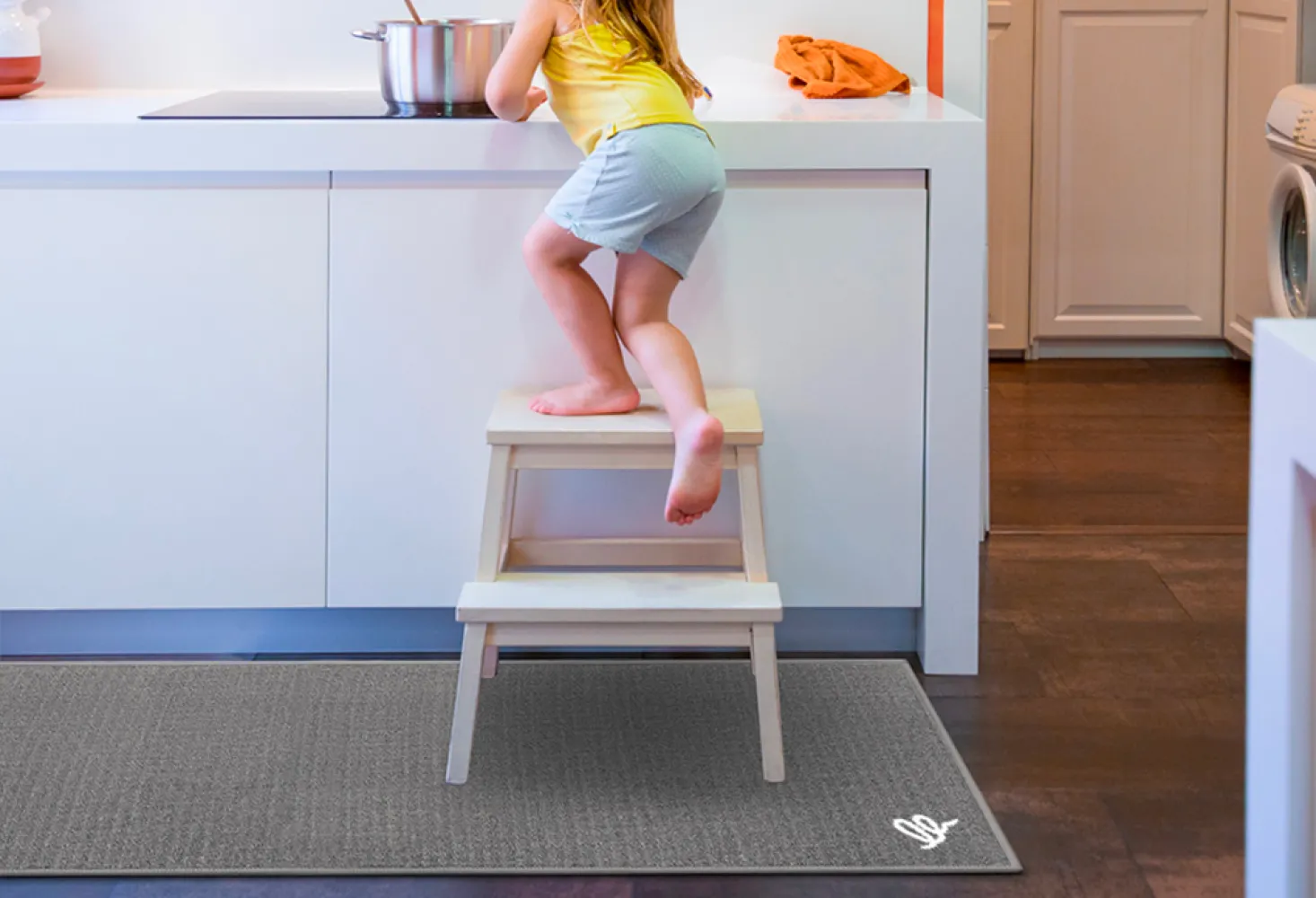
What are the measurements for the kitchen carpet?
The measurement of the kitchen carpet varies depending on the kitchen, of course, but also on the type of use.
If you want to buy one to place near the stove it goes without saying that it should at least cover the length of the hob itself or, better still, the length of the entire worktop, i.e. including where you do the cooking.
As for the sink area, the length of the carpet should also be equal to the length of the basin or basins (if you have chosen a double-bowl sink).
In both cases, a mat or runner at least 50 cm wide is sufficient.
If you have a kitchen that can be used as a living area, then you could also consider a carpet to be placed under the table. Consider the shape of the table (round, square or rectangular) and choose a size that allows the person sitting at the table not to have to put their chair two feet down and two feet up from the rug itself. Remember also to consider a possible changeable table set-up, for example to go from 4 to 6 or 8 diners. This is also something to keep in mind.

Plain or patterned kitchen carpet? Advice on colours?
Consistency always pays off so when choosing a kitchen carpet you should take into account the style of the kitchen furniture itself.
Consider that solid-coloured kitchen carpets are easier to match by trying to create a tone-on-tone coordination or, if you are looking for more elaborate solutions, with contrasting colours.
To help you in your colour choice you could use online tools such as colour palettes that help you understand which complementary colours and combinations are the most interesting.
Fancy carpets, on the other hand, require a little more thought as they could help to complement the style of the kitchen. If, for example, you are thinking of a shabby or industrial style kitchen, the research might take longer but it is an investment that could increase the aesthetic value of the kitchen by giving it more character and personality.
